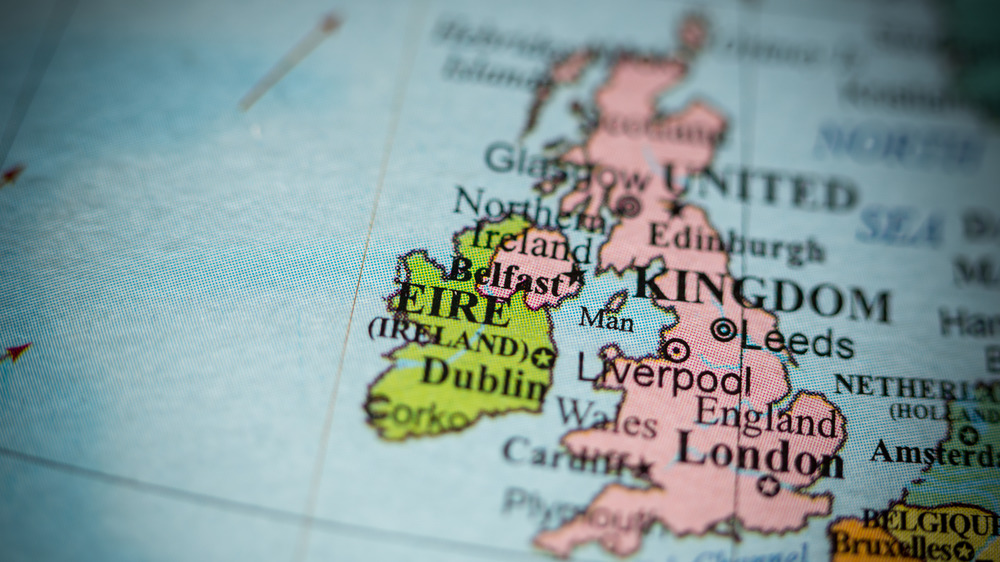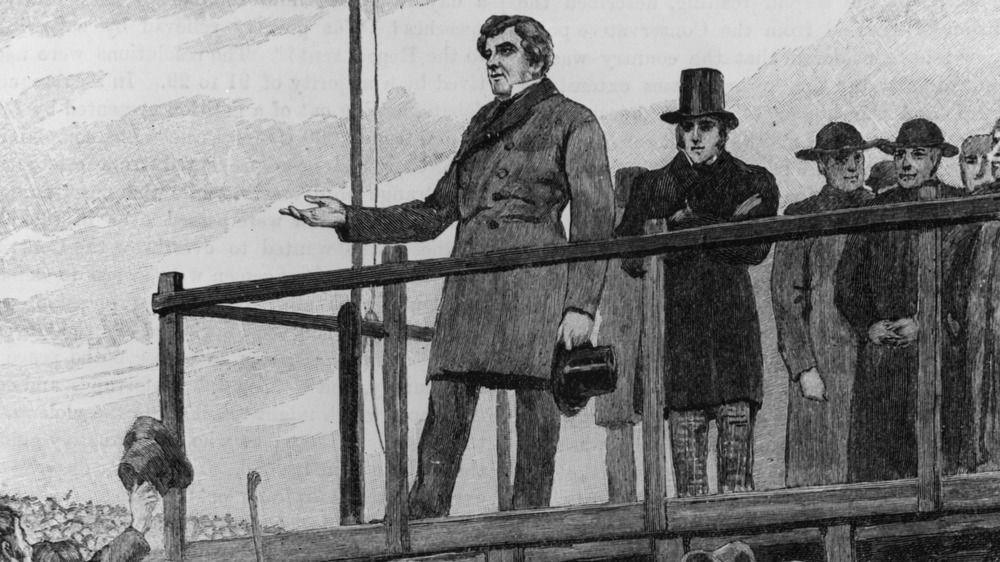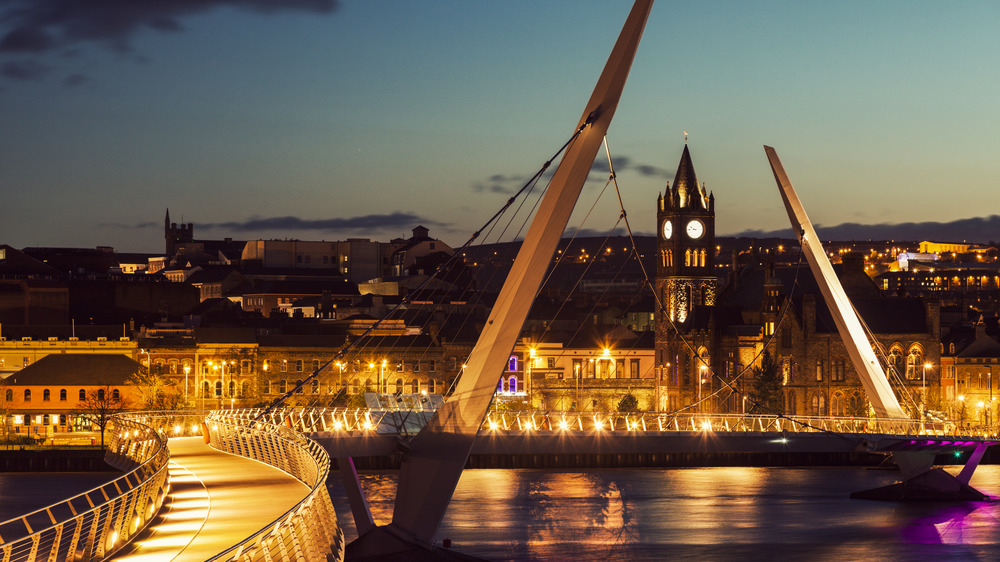Why Is Ireland Separated Into Two Countries?
Today, the island of Ireland is known for its evocative beauty, its welcoming people, and its vast contribution to world culture. But it is a land that has suffered a painful past, and the island as we know it today has been forged by seismic upheavals that continue to shape its political landscape.
Though commonly referred to simply as "Ireland," the island itself is today made up of two countries: the Republic of Ireland to the south and northwest, and, in the northeast, Northern Ireland. Per Britannica, The Republic, the capital city of which is Dublin, is a sovereign, self-ruling nation. Meanwhile, Northern Ireland, with the city of Belfast as its capital, is a constituent unit of the United Kingdom, alongside England, Scotland, and Wales.
For a long time, the island of Ireland was entirely under the control of the United Kingdom. The 1801 Act of Union — achieved, chroniclers argue, through the unabashed buying of Irish Parliament votes — saw the dissolution of the Irish Parliament and the governance of the island transfer to Westminster, the British Parliament in London. However, according to The Victorian Web, the act proved to be "disastrous," as it failed to properly address one of Ireland's central points of conflict: the suppression of Irish Catholicism, whose emancipation was a central aim of the Irish Rebellion of 1798.
The United Kingdom of Great Britain and Ireland was to remain in place until the early part of the 20th century.
The island of Ireland after the Act of Union
Nineteenth-century Ireland was therefore characterized by social and religious turmoil deriving from the instigation of the Act of Union at the very beginning of the century, which saw power laid predominantly in the hands of the Protestant Ascendancy. As a result, the period saw multiple outbreaks of sectarian violence as unrest grew among the Catholic populace.
Yet, peaceful opposition to the Act of Union was growing, too. Daniel O'Connell (illustrated), who became the first Catholic MP to take a seat in Parliament after The Roman Catholic Relief Act 1829, campaigned unsuccessfully to reestablish an Irish Parliament, according to IrishCentral. By the 1870s, however, the idea was beginning to gain ground. What became known as the Irish Home Rule movement, under the leadership of such figures as Protestant landowner Charles Stewart Parnell, pushed for a new form of self-government, albeit while remaining a constituent unit of the United Kingdom of Great Britain and Ireland. Decades of legislative battles in which Home Rule seemed close to passing all failed to see the reemergence of an Irish Parliament in the 19th century. It would take the Easter Rising of 1916 and the Irish War of Independence (1919-1921) — instigated by the shooting of two Unionist police officers following the proclamation of an Irish parliament in Dublin by the nationalist party Sinn Féin, according to the National Archives — to see Home Rule pass through the British Parliament.
Home Rule and the partition of Ireland
The Government of Ireland Act 1920 was passed as "an act to provide for the better Government of Ireland," according to Encyclopedia.com, hoping to quell the civil war that was ravaging the island. It was this act that first partitioned Ireland in the manner we know it today.
"Northern Ireland shall consist of the parliamentary counties of Antrim, Armagh, Down, Fermanagh, Londonderry, and Tyrone, and the parliamentary boroughs of Belfast and Londonderry, and Southern Ireland shall consist of so much of Ireland as is not comprised within the said parliamentary counties and boroughs."
However, the British government's concept of a "Southern Ireland" as part of the United Kingdom never came to pass. Instead, the peace negotiations at the end of the Irish War of Independence in 1921 led to the Anglo-Irish Treaty, an agreement that provided for the establishment of an Irish Free State, while also stipulating that Unionists predominantly located in the northwest of the island could opt out of the Free State and remain a part of the United Kingdom.
And this is exactly what the Northern Irish Unionists did, while at 1 p.m. on December 6, 1922, King George V proclaimed that the Irish Free State was an independent dominion. In 1949, the south left the British commonwealth, becoming the Republic of Ireland as it is known today, though the century since has seen violent border disputes and the horrors of The Troubles, while ensuring peace remains an ongoing concern.


